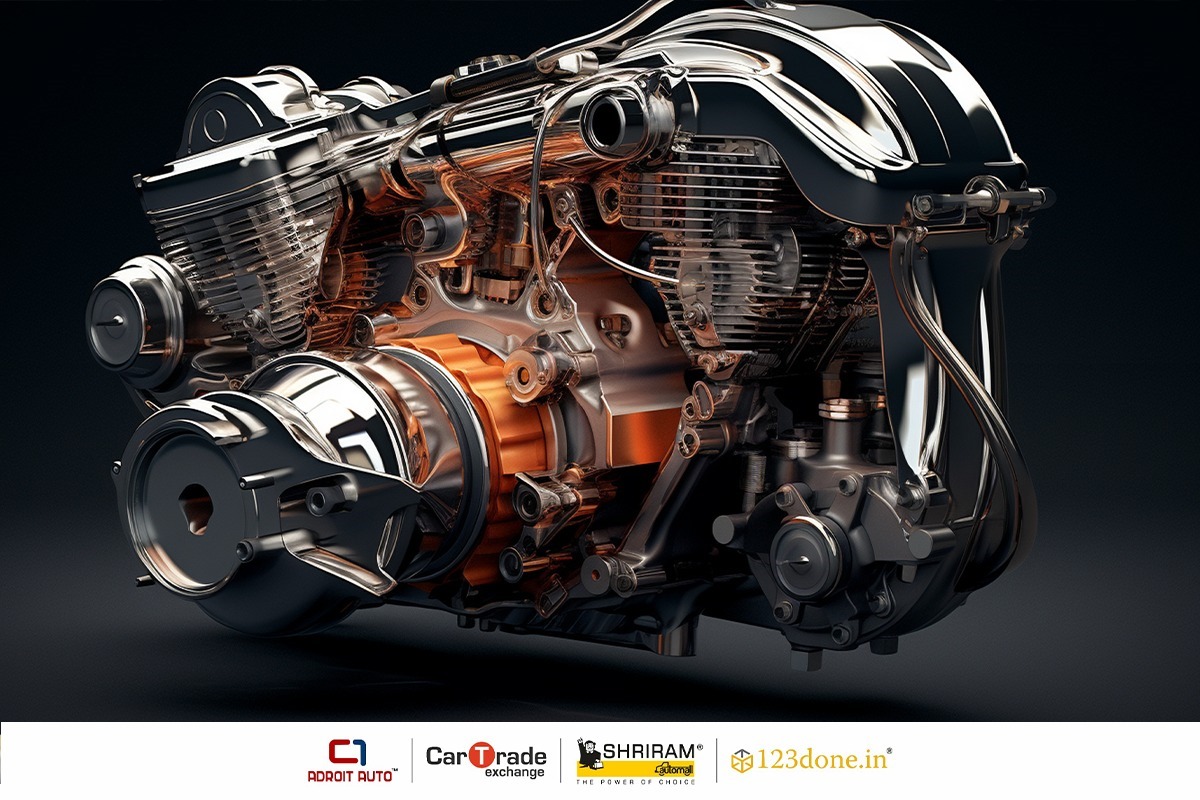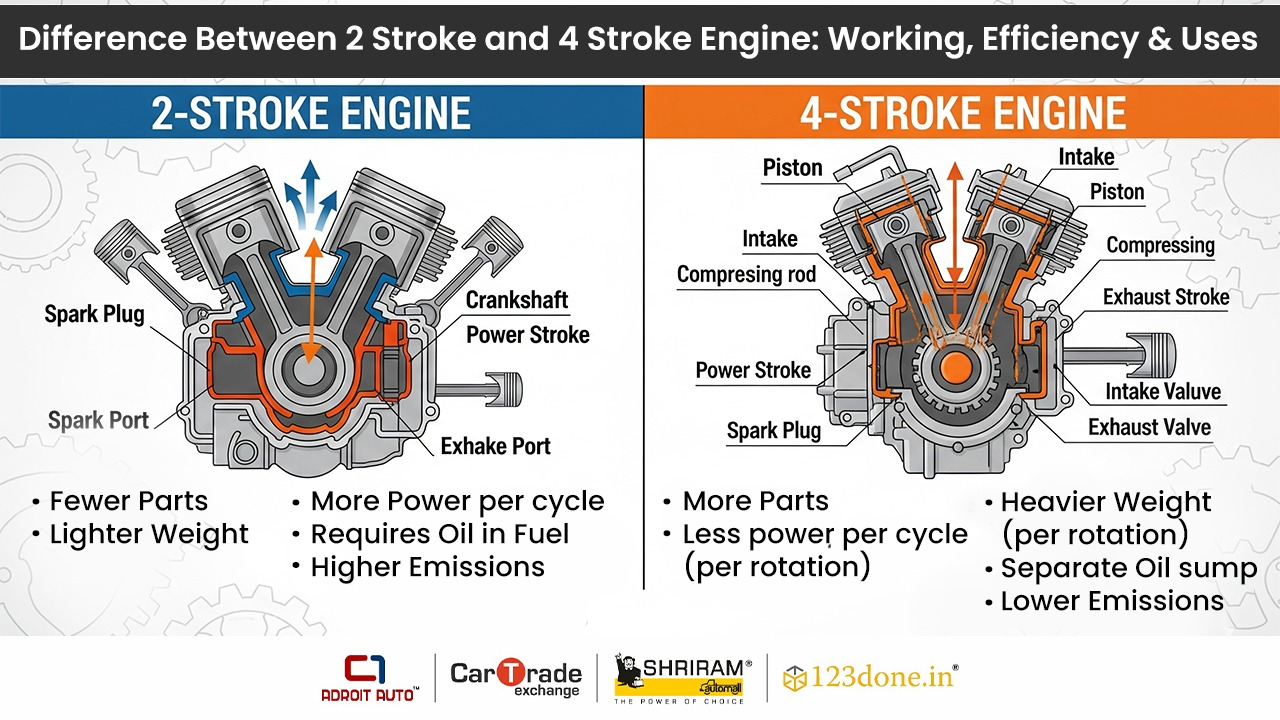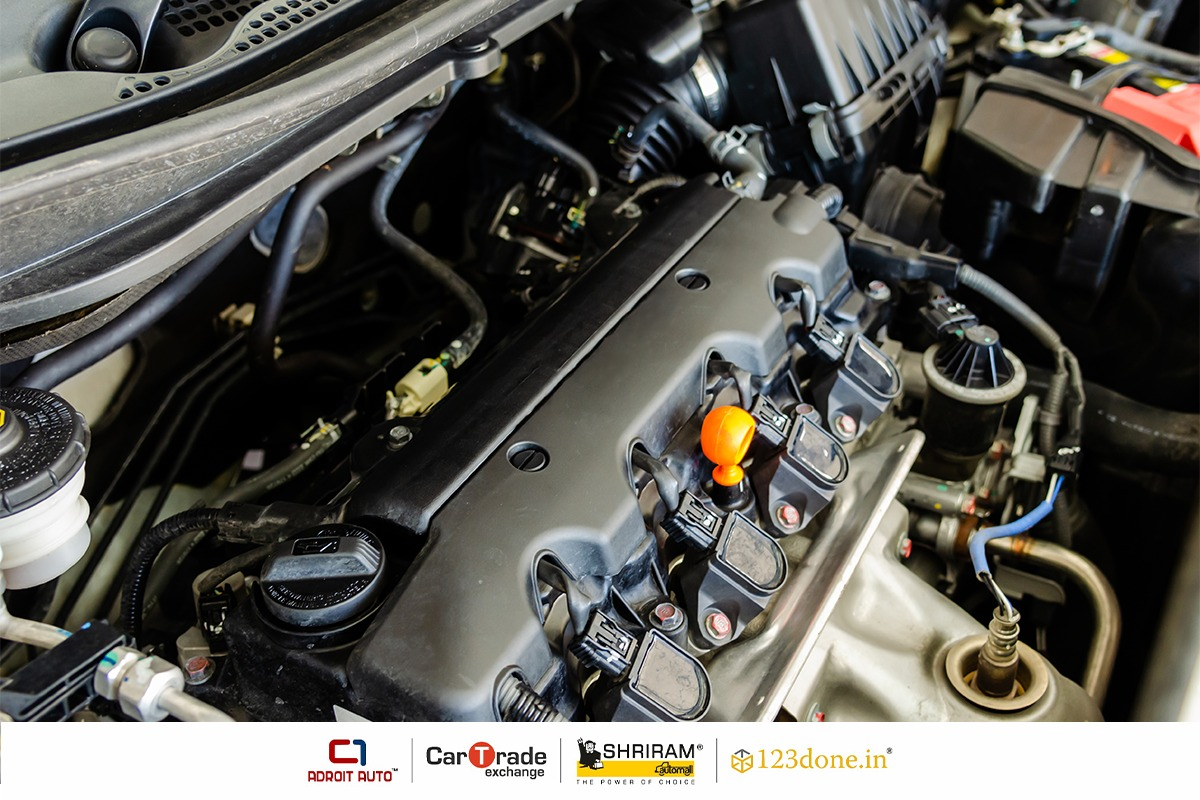Difference Between 2-Stroke and 4-Stroke Engine: Working, Efficiency & Uses

There have been many innovations when it comes to the automotive sector, and changes have been made constantly. But when it comes to the engine of a vehicle, the same 2-stroke and 4-stroke engines have been there, without any changes. But there lies a significant difference between 2-stroke and 4-stroke engine. The power cycle of a 2-stroke engine is completed in two piston strokes, whereas in the 4-stroke engine, it is completed with four piston strokes. This blog will further help you know the difference, along with the working, efficiency, and uses of both of these engines.
Difference Between 2-Stroke and 4-Stroke Engine
The significant difference between the piston strokes determines the working of both engines. Apart from that, let us look at how these engines operate and are made:

What is 2-Stroke Engine
The engine combustion cycle in a 2-stroke engine is completed with one piston stroke and a return stroke, resulting in the engine making two piston strokes. While making the reverse stroke, exhaust is left out to make way for fresh fuel to enter the cylinder. The exhaust is caused by the explosion of compressed fuel, which occurs during the initial compression stroke of the piston. In a 2-stroke engine, the oil must be pre-mixed with the fuel.
What is 4-Stroke Engine
Two piston strokes followed by two return strokes are done in 4-piston engine. One compression stroke with one exhaust stroke helps the engine's combustion. The power is produced after 4 strokes of the piston, and the spark plug also fires only once every revolution. In a 4-stroke engine, there is no requirement for pre-mixing of fuel and oil since they have a separate compartment for oil storage.
Comparison Between 2-Stroke and 4-Stroke Engine
There lies a significant difference between the two engine types. The definitions and some terms might confuse you, so we came up with a simplified table comparing 2-stroke and 4-stroke engines. Let us take a look at it:
|
Two-Stroke Engine
|
Four-Stroke Engine
|
|
Completes the entire cycle (intake, compression, power, exhaust) in just two piston strokes.
|
Completes the full cycle (intake, compression, power, exhaust) in four piston strokes.
|
|
Delivers 1.5 to 1.8 times more power than a four-stroke engine of the same size, though theoretically it should be double.
|
Produces less power compared to a two-stroke engine of the same capacity.
|
|
Higher pressure and heat develop at the start of compression, causing greater stress on engine components.
|
Operates with relatively lower pressure and temperature, reducing thermal stress.
|
|
Suffers from poor scavenging and lower volumetric efficiency, making it less effective.
|
Offers better scavenging and higher volumetric efficiency, hence more effective.
|
|
Consumes more fuel.
|
Consumes less fuel.
|
|
Needs more headroom for the piston.
|
Requires less clearance space for the piston.
|
|
Generates torque more smoothly, so the flywheel can be smaller.
|
Torque is less uniform; it requires a heavier flywheel for balance.
|
|
Commonly used in low-speed, heavy-duty propulsion systems like marine engines.
|
More often found in medium-speed applications like power generation.
|
|
Produces one power stroke with every crankshaft revolution.
|
Produces one power stroke every two crankshaft revolutions.
|
|
Camshaft to crankshaft ratio = 1:1.
|
Camshaft to crankshaft ratio = 1:2.
|
|
Can run on lower-grade fuel due to longer stroke, allowing better combustion and scavenging.
|
Less efficient with low-quality fuel, leading to incomplete burning.
|
|
Requires less lubrication oil.
|
Needs more lubrication oil for similar power output.
|
|
Provides a higher power-to-weight ratio.
|
Has a lower power-to-weight ratio.
|
Working of 2-Storke and 4-Stroke Engine
The piston in a two-stroke engine completes the power cycle in two strokes, or up and down. The steps are as follows:
Compression → Intake → Power → Exhaust
One power stroke happens with each crankshaft revolution. As a result, the engine produces more wear and tear and is more powerful for its size but also less fuel-efficient.
The piston in a four-stroke engine completes the power cycle in four strokes. The steps are as follows:
Compression → Intake → Power → Exhaust
One power stroke happens for every two crankshaft revolutions. Longer engine life, increased efficiency, and smoother operation are all results of this engine. However, it also results in a lower power-to-weight ratio.
Efficiency & Uses of 2-Stroke and 4-Stroke Engine
Due to incomplete combustion and poor scavenging, a 2-stroke engine uses less fuel. The engine uses more oil and fuel. Bikes, scooters, mopeds, small boats, and other vehicles frequently have two-stroke engines. On the other hand, a 4-stroke engine uses less fuel due to improved combustion. Numerous vehicles, including cars, trucks, buses, power generators, and large industrial machinery, use this engine.

Conclusion
The number of piston strokes needed to finish a power cycle is the primary distinction between a 2-stroke and a 4-stroke engine. A 2-stroke engine with a better power-to-weight ratio can produce more power, but it uses less fuel. This engine is frequently found in motorcycles, scooters, boats, and other vehicles. These days, a 4-stroke engine is more durable and operates more smoothly, making it perfect for vehicles like cars, trucks, generators, etc. Knowing how 2-stroke and 4-stroke engines operate, how efficient they are, and how to use them will help you select the best engine type for your needs.

 Download Our App
Download Our App



